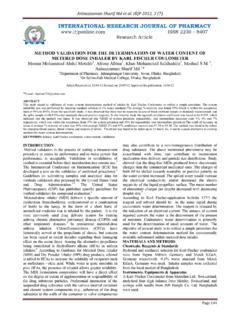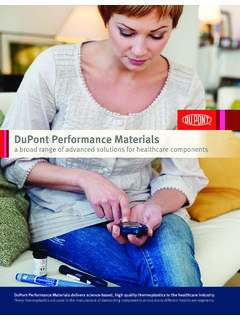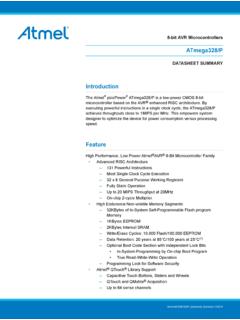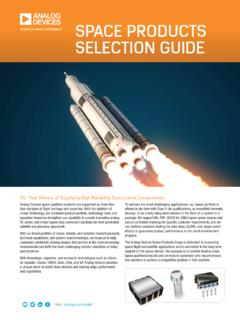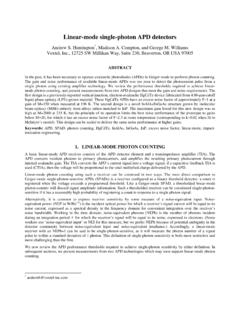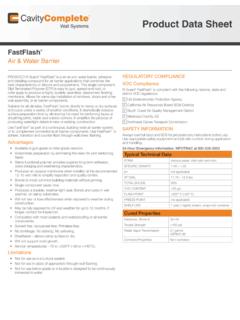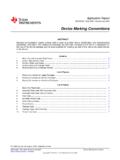Transcription of ISSN 2230 ULTRA PERFORMANCE LIQUID …
1 Patil V. P. et al. IRJP 2 (6) 2011 39-44 IRJP 2 (6) June 2011 Page 39-44 INTERNATIONAL RESEARCH JOURNAL OF PHARMACY ISSN 2230 8407 Available online Review Article ULTRA PERFORMANCE LIQUID CHROMATOGRAPHY: A REVIEW Patil V. *, Tathe R. D1., Devdhe S. , Angadi S. and Kale S. 1 Department of Pharmaceutical Analysis, Yash Institute of Pharmacy, Aurangabad, Maharashtra, India 2 Department of Pharmacology, Yash Institute of Pharmacy, Aurangabad, Maharashtra, India 3 Department of Pharmaceutical Chemistry, Yash Institute of Pharmacy, Aurangabad, Maharashtra, India Article Received on: 09/04/2011 Revised on: 18/05/2011 Approved for publication: 10/06/2011 *Prof. Vandana P. Patil, Yash Institute of Pharmacy, Aurangabad-431134, Maharashtra, India. E-mail: ABSTRACT ULTRA PERFORMANCE LIQUID chromatography (UPLC) takes advantage of technological strides made in particle chemistry PERFORMANCE , system optimization, detector design and data processing and control.
2 Using sub-2 mm particles and mobile phases at high linear velocities and instrumentation that operates at higher pressures than those used in HPLC, dramatic increases in resolution, sensitivity and speed of analysis can be obtained. This new category of analytical separation science retains the practicality and principles of HPLC while creating a step function improvement in chromatographic PERFORMANCE . This review introduces the theory of UPLC and summarizes some of the most recent work in the field. KEYWORDS: UPLC, HPLC, Resolution, Sensitivity. INTRODUCTION UPLC refers to ULTRA PERFORMANCE LIQUID Chromatography. It improves in three areas: chromatographic resolution, speed and sensitivity analysis. It uses fine particles and saves time and reduces solvent consumption. UPLC is comes from HPLC.
3 HPLC has been the evolution of the packing materials used to effect the separation. An underlying principle of HPLC dictates that as column packing particle size decreases, efficiency and thus resolution also increases. As particle size decreases to less than m, there is a significant gain in efficiency and it doesn t diminish at increased linear velocities or flow rates according to the common Van Deemter equation. By using smaller particles, speed and peak capacity (number of peaks resolved per unit time) can be extended to new limits which is known as ULTRA PERFORMANCE . The classic separation method is of HPLC (High PERFORMANCE LIQUID Chromatography) with many advantages like robustness, ease of use, good selectivity and adjustable sensitivity.
4 It s main limitation is the lack of efficiency compared to gas chromatography or the capillary electrophoresis due to low diffusion coefficients in LIQUID phase, involving slow diffusion of analytes in the stationary ,2 The Van Deemter equation shows that efficiency increases with the use of smaller size particles but this leads to a rapid increase in back pressure, while most of the HPLC system can operate only up to 400 That is why short columns filled with particles of about 2 m are used with these systems, to accelerate the analysis without loss of efficiency, while maintaining an acceptable loss of load. To improve the efficiency of HPLC separations, the following can be done:- i) Work at higher temperatures ii) Use of monolithic columns USE OF THE UPLC SYSTEM Elevated-temperature chromatography also allows for high flow rates by lowering the viscosity of the mobile phase, which significantly reduces the column back pressure.
5 Monolithic columns contain a polymerized porous support structure that provides lower flow resistances than conventional particle-packed ,5,6 PRINCIPLE The UPLC is based on the principal of use of stationary phase consisting of particles less than 2 m (while HPLC columns are typically filled with particles of 3 to 5 m). The underlying principles of this evolution are governed by the van Deemter equation, which is an empirical formula that describes the relationship between linear velocity (flow rate) and plate height (HETP or column efficiency). The Van Deemter curve, governed by an equation with three components shows that the usable flow range for a good efficiency with small diameter particles is much greater than for larger Patil V.
6 P. et al. IRJP 2 (6) 2011 39-44 IRJP 2 (6) June 2011 Page 39-44 ,8 H=A+B/v+Cv Where A, B and C are constants and v is the linear velocity, the carrier gas flow rate. The A term is independent of velocity and represents "eddy" mixing. It is smallest when the packed column particles are small and uniform. The B term represents axial diffusion or the natural diffusion tendency of molecules. This effect is diminished at high flow rates and so this term is divided by v. The C term is due to kinetic resistance to equilibrium in the separation process. The kinetic resistance is the time lag involved in moving from the gas phase to the packing stationary phase and back again. The greater the flow of gas, the more a molecule on the packing tends to lag behind molecules in the mobile phase.
7 Thus this term is proportional to v. Therefore it is possible to increase throughput and thus the speed of analysis without affecting the chromatographic PERFORMANCE . The advent of UPLC has demanded the development of a new instrumental system for LIQUID chromatography, which can take advantage of the separation PERFORMANCE (by reducing dead volumes) and consistent with the pressures (about 8000 to 15,000 PSI, compared with 2500 to 5000 PSI in HPLC). Efficiency is proportional to column length and inversely proportional to the particle size18. Therefore, the column can be shortened by the same factor as the particle size without loss of resolution. Efficiency is three times greater with m particles compared to 5 m particles and two times greater compared to m particles.
8 Resolution is 70% higher than with 5 m particles and 40% higher than with m particles. High speed is obtained because column length with m particles can be reduced by a factor of 3 compared to 5 m particles for the same efficiency and flow rate can be three times higher. The application of UPLC resulted in the detection of additional drug metabolites, superior separation and improved spectral ,10 SMALL PARTICLE CHEMISTRY The promises of the van Deemter equation cannot be fulfilled without smaller particles than those traditionally used in HPLC. The design and development of sub-2 mm particles is a significant challenge and researchers have been active in this area for some time to capitalize on their advantages. Although high efficiency, non-porous mm particles are commercially available, they suffer from poor loading capacity and retention due to low surface area.
9 To maintain retention and capacity similar to HPLC, UPLC must use novel porous particles that can withstand high pressures. Silica based particles have good mechanical strength, but can suffer from a number of disadvantages, which include a limited pH range and tailing of basic analytes. Polymeric columns can overcome pH limitations, but they have their own issues, including low efficiencies and limited capacities. In 2000, generation hybrid chemistry that took advantage of the best of both the silica and polymeric column worlds was introduced. Produced using a classical sol-gel synthesis that incorporates carbon in the form of methyl groups, these columns are mechanically strong with high efficiency and operate over an extended pH range. But, in order to provide the kind of enhanced mechanical stability required for UPLC, a second generation bridged ethane hybrid (BEH) technology was developed.
10 These mm particles derive their enhanced mechanical stability by bridging the methyl groups in the silica matrix. Packing mm particles into reproducible and rugged columns was also a challenge that needed to be overcome. Requirements include a smoother interior surface of the column hardware, and re-designing the end frits to retain the small particles and resist clogging. Packed bed uniformity is also critical, especially if shorter columns are to maintain resolution while accomplishing the goal of faster separations. In addition, at high pressures, frictional heating of the mobile phase can be quite significant and must be considered. With column diameters typically used in HPLC ( to mm), a consequence of frictional heating is the loss of PERFORMANCE due to temperature induced non uniform.
